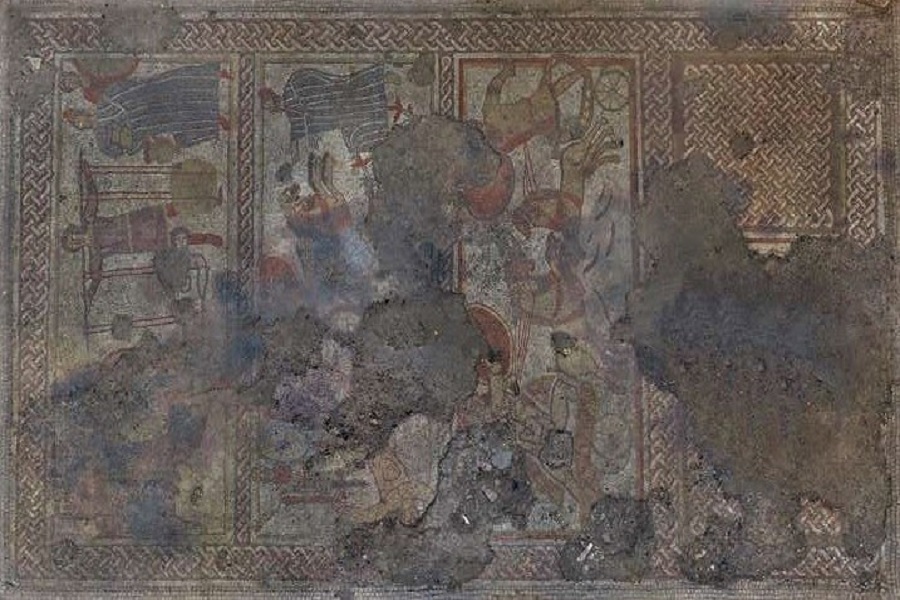A high status Roman villa has been discovered between Ketton and Luffenham, close to the River Chater, south of Rutland Water. An excavation undertaken by the University of Leicester has uncovered part of a dramatic mosaic with 3 panels each portraying a scene from the Siege of Troy as described in the Iliad.
The landowner made an initial investigation after spotting interesting surface pottery and exploring Google satellite images. He called in the Leicestershire County archaeologist and this led rapidly to a professional excavation. It will feature in an edition of Digging for Britain to be screened in 2022. The following video about the Rutland Roman villa has been released by the University of Leicester.
It is believed that the site comprises the main villa building, bath house and agricultural buildings, as well as a probable Saxon aisled hall, all arranged within a large, ditched complex. Geophysical surveys suggest that the principal building may be a double portico/corridor-type villa, with rooms arranged around an internal courtyard or garden and linked structures projecting at each end.
Finds recovered from the site indicate that it was occupied from the mid or later third century until the late fourth century AD. There is also evidence for post-Roman activity.
The mosaic uncovered within the main villa measures approximately 7m by 11m. John Thomas, deputy director of ULAS and project manager has called it Britain’s
‘most exciting Roman mosaic discovery for a century’.
The Rutland mosaic is unique in the UK in featuring Achilles and his battle with Hector at the conclusion of the Trojan War; it is one of only a handful of examples from across Europe. It points to an estate owner keen to demonstrate wealth, Roman affiliation, and knowledge of classical literature. There is evidence that the mosaic had been repaired and that the room was subsequently used other purposes, with a hearth built on part of the floor. The excavations suggest that several other rooms within the Rutland Roman villa may have had mosaic floors.
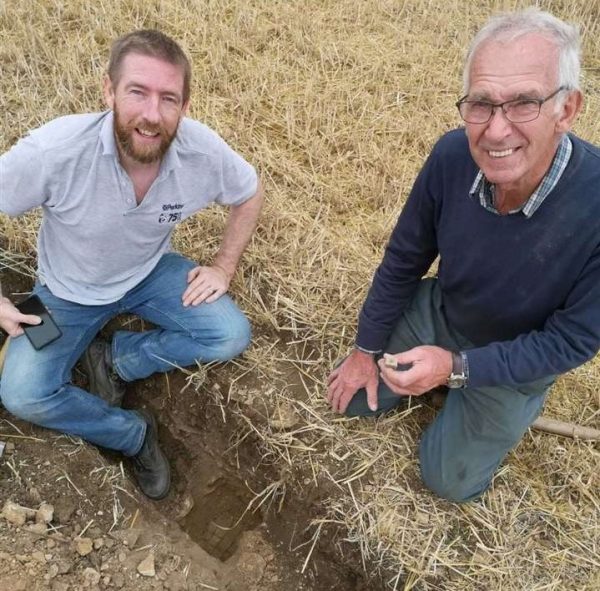
Jim Irvine and Brian Naylor discovered the Roman mosaic in their field during the 2020 lockdown
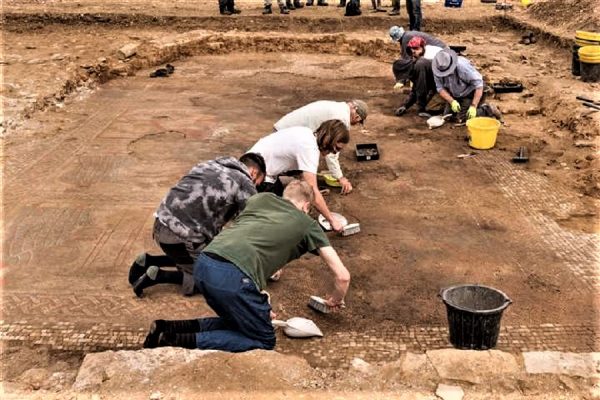
Exposing the mosaic floor
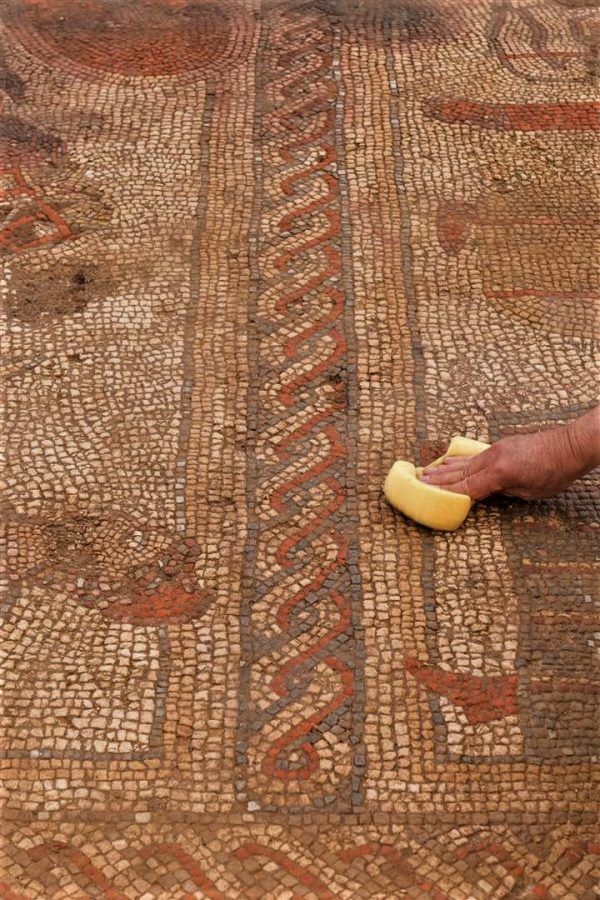
Cleaning reveals the intricate design and colourful images
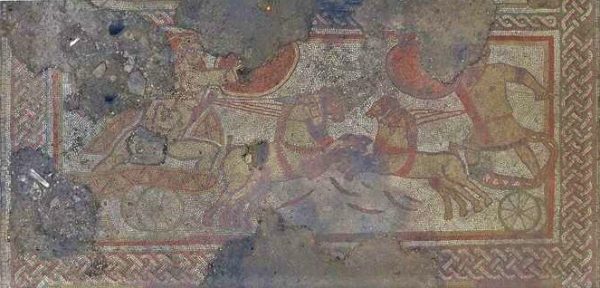
A scene depicting the battle between Achilles and Hector
The site near Cuckoo Lodge Farm sits within a meander of the River Chater – just south of the Peterborough-Birmingham railway line. It is close to the recently established Rutland Vineyard; perhaps the idea of a vineyard on rolling limestone slopes is not so new! Please note that the site has been added to the list of Scheduled Monuments and is on private land so is not accessible.
Historic England is planning further excavations for 2022.
Rutland Roman Villa – 2022 Update
The team from Leicester University and Historic England returned to the Rutland Roman Villa site this summer and were not disappointed. A series of trenches across the site were targeted to flesh out understanding of this high-status villa community discovered in 2020. Finds included another mosaic (a geometric design more familiar to those in the Nene Valley) and a large aisled hall.
Excavations in 2022 have revealed a large hall located 50 metres from the main villa. It was probably originally a wooden barn which was converted to stone during the 3rd or 4th century. One end of the structure was used for agricultural or craft work, while the other end was an extensive domestic area which had a bath suite, containing a hot (laconicum) and cold (frigidarium) rooms.
There is evidence of sophisticated underfloor heating that used different techniques to maintain varying temperatures and heating ducts built into the walls. It is thought that the floor of a water tank situated outside the building might have been used to collect water from the roof.
Focusing on the main villa, the team found fragments of polished marble, broken stone columns and painted wall plaster. Most notably is evidence of mosaics in the corridors leading to the dining room, one of which is relatively intact and features an intricate geometric pattern that probably dates to the same period of construction as the Trojan War mosaic.
The new finds suggest the estate was older than previously thought, possibly by a hundred years or more, meaning it was first occupied in the 2nd or 3rd centuries.
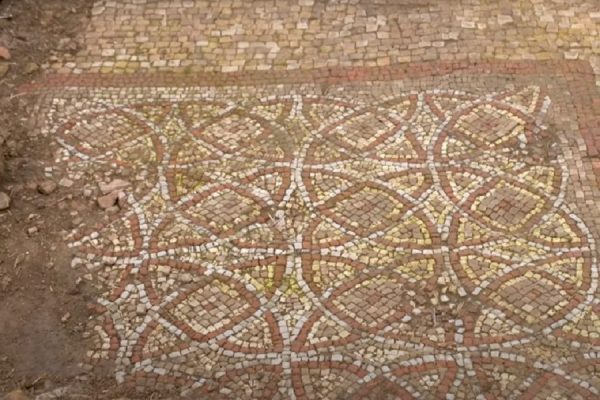
Mosaic with geometric design discovered in 2022
2022 Video Update from ULAS and Historic England

